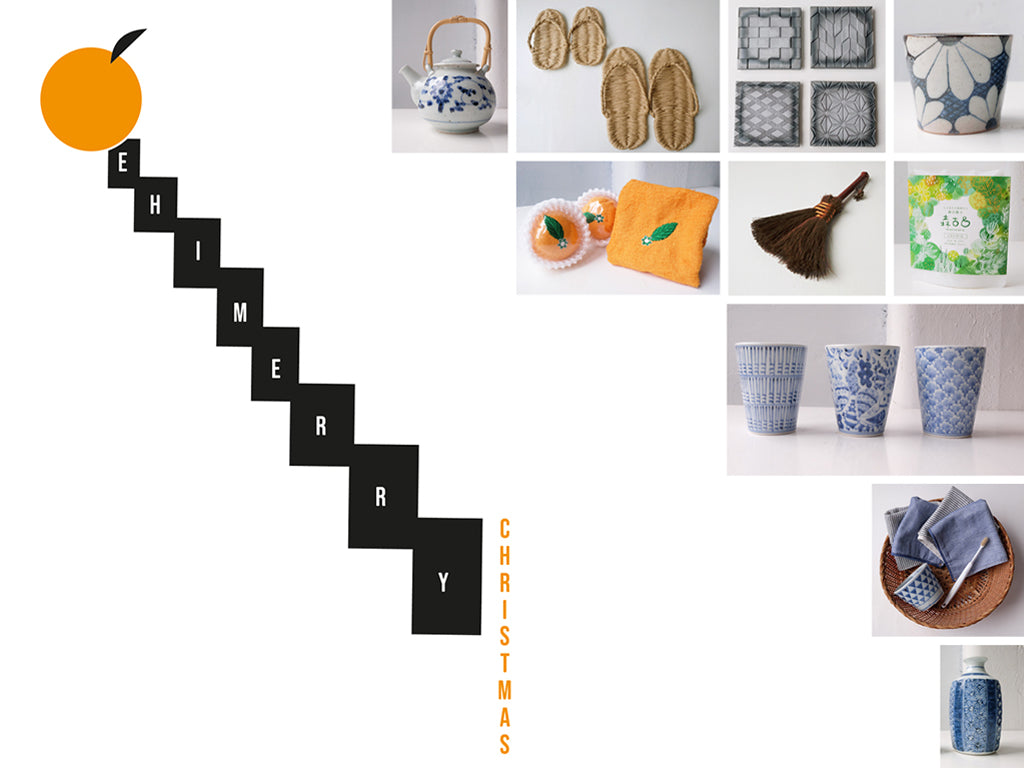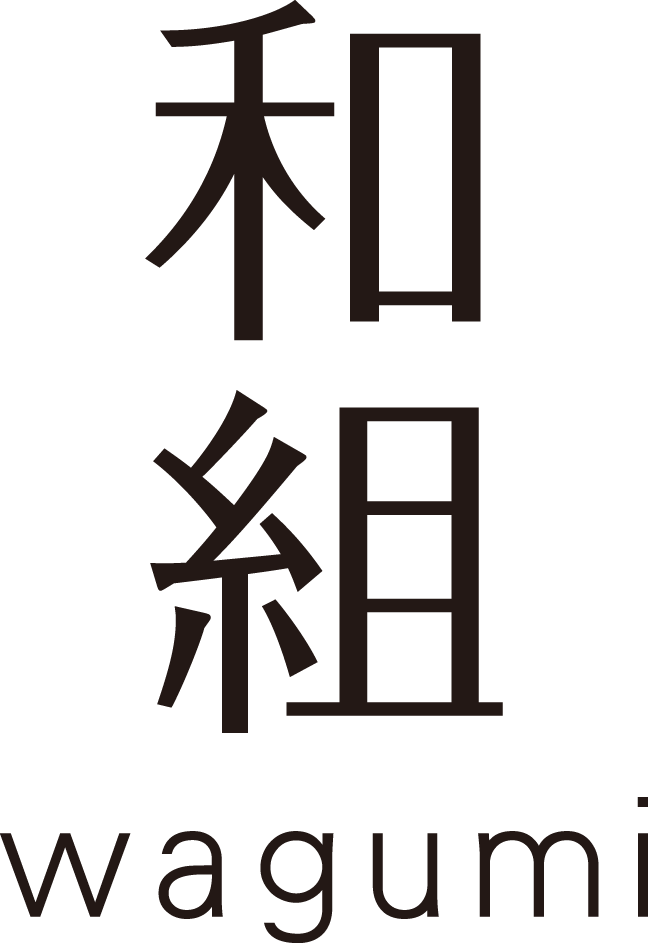
Beginning this month, at wagumi we have a special collection of items from Ehime. This is under the title Ehi-merry Christmas. At the end of 2020, when much has gone wrong, we would humble submit that this just the kind of thing we need.

Ehime, the pearl of the Japanese inland sea. A sunny place, it is on the northwest corner of the Shikoku island, facing Hiroshima to the north.
In addition to its happy geography, it is somewhere renowned for fine things. Most immediately, what comes to mind for many Japanese people is citrus fruit. This could be yuzu, or Setouchi lemons, or perhaps most of all: mikan oranges. In Europe of course, satsuma oranges are famous. Imagine this, but more flavourful still.
Ehime also has a great, and slightly surprising history in towels. It just so happened that the race to start domestic factories for the new imported product of towels, was something that Ehime won. More specifically the town of Imabari of the northern shore, retains a strong towel industry today. The production is not off-shored, and remains in the region. The competitive advantage of the Imabari towel makers is in their quality. Decades of engineering ever softer, and more satisfying towels gives the small businesses based their each their own unique selling point.
Ehime’s pre-industrial history was also one of fine crafts, some of them on a community or folk level. Most notable perhaps are white ceramics of the Tobe-ware tradition. Japan has several lineages in porcelain, which of course have inspiration and links to the wider East Asian production of these ceramics. There is the porcelain powerhouse of Arita, or Imari, which often refers to the same white ceramics made in this region of Saga. Nearby in Nagasaki there is Hasami-ware, and far away to the north there is the colourful, finely painted Kutani style porcelain in Ishikawa. Ehime’s Tobe-ware exists in this context, as somewhere that received its start from imported Arita craftspeople in the late 18th century. Its characteristic today is in a respect for the early Arita traditions and in the high number of small, often family led, pottery houses. It has a hand painted charm, and a pureness in pattern.
For ‘Ehi-merry Christmas’ we have Tobe-ware from three kilns: Nakata-gama, Yōki-gama and Tosai-gama. The Nakata-gama kiln, which has been the ceramics business of Masataka Nakata since 1974, shows the quality of a veteran. Nakata has his interest in the classic techniques and patterns of Arita and Tobe-ware, developed over hundreds of years. His work reflects the motifs that would have been found by visitors to Matsuyama, the Ehime capital, in the early flowering of its decorative arts.
Yōki-gama is the ceramic work shop of Kimiko Tanaka, a talented artist in ceramics who paints each of her works by hand. The intricacy of the blue painted on the white, is clear to see, and satisfying to own.

The kiln operated by the Nagato family in the heart of the Tobe-ware producing region: Tosai-gama, offers a modern face to the classic ‘sometsuke’ technique of blue painted designs. The patterns offer an almost Nordic sense, which the thin lines of the ceramic forms, and the texture effects on the surface giving a window to the possibilities of Tobe-ware as it is practiced today.

While Tobe-ware is among the most famous of Ehime’s crafts there is much else besides. For example: Iyo hōki brushes made traditionally from the leaf sheath fibre of Trachycarpus palm trees. Iyo is the historic name for modern Ehime, and there can be few more traditional makers of shuro (palm sheath) brushes than Nagaike Mingeiten. Based in the old town of Uchiko in the Ehime interior, the method of making brushes here is so rare and traditional that the maker has enclosed a leaflet requesting information if you see another brush like it.
Another ceramic tradition in Ehime is for roofing tiles. These are Ibushi Kawara, which are representative of buildings in Shikoku, and are made Imabari. The Koizumi company is a maker of these tiles, and has brought their rough hewn quality to other locations too, such as coasters.
Ehime is also known for its paper. Japan is a country full of paper traditions, representative the special place in communication, interiors design and architecture that types of washi (Japanese paper) have held. The Iyo washi of Ehime is one such tradition, with its handmade mulberry based paper a prized commodity. It is unusual therefore to see it used in the production of footwear as the Washi no Ishikawa family business have done. A firm in the Ishikawa family since the 1890s, the sandals and slippers (zōri) made under their auspices make a special use of the sturdy material, and are just the thing for luxurious walks from the shower.
Onto their fine paper envelopes, and gifts and other things too, people in Ehime often apply Iyo Mizuhiki, bright red cord ties. The ties themselves are made from a hardened version of the local paper, and have an especial centre of production in the far eastern corner of Ehime. Gifting often is often a moment when they appear, quite often in the new year period. The Yamanishi company is exponent in mizuhiki since the 1920s, and is at present lead by Akemi Morita, who is herself adept in the craft.


Finally, Ehime is also a place to relax. The Kuma highlands are the mountainous interior, far from the sea-facing Matsuyama and Imabari, which were traditionally a home to pirates. Away from such dangers, today too, this natural, scenic region is a place to take in some fine air. The thatched Wagura building was probably made up 300 years ago, and is somewhere where they make great treatments for baths. With hinoki wood and other natural ingredients in their Moricoro bath powder pack offer the particular luxury of the Kuma region, and for a brief period of soaking at least, can ensure a Christmas of Ehi-merry dynamics.







